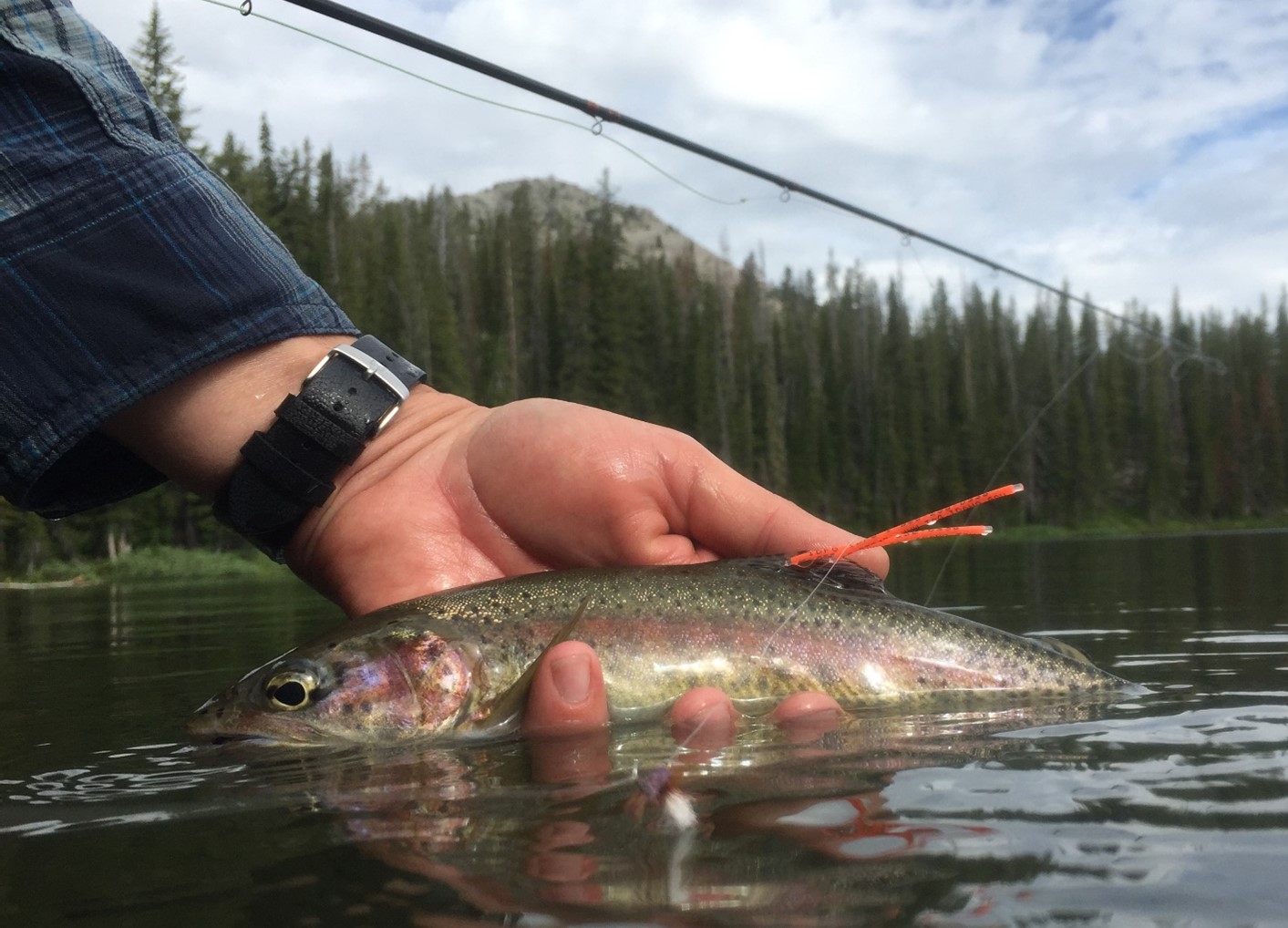This past winter was very good for snowpack in Idaho mountains, which is great news for trout anglers. High river flows in the spring clean the gravel that trout use for spawning and revitalize important stream habitat components such as undercut banks and large wood pieces. High flows re-fill impoundments like Blackfoot Reservoir and Magic Reservoir which, during drought years, can experience very low water levels that ruin trout fisheries until the next big water year returns. While heavy mountain snowpack is good for trout populations, it does shorten the fishing season in alpine lakes. This year, such fisheries may not be accessible until mid-June or later, but once the ice melts and the snow clears, alpine lakes can provide a scenic and memorable fishing experience.
The Idaho Department of Fish and Game regularly stocks hundreds of alpine lakes, usually with trout fry that are dropped from an airplane. Many lakes also now have self-sustaining, wild trout populations, so the stocked fish merely supplement the natural production already occurring in some lakes. Because these waters are pretty remote, daily bag limits of six trout (of any size) apply to nearly all alpine lakes, and angling effort has been presumed to be relatively low. However, because these lakes are difficult to study, due to their remoteness, estimates of the number of trout harvested have actually never been produced here, or anywhere else for that matter. Without such information, fisheries managers have just assumed that angler harvest is not negatively affecting the size of fish available to anglers, or the catch rates at these waters.



